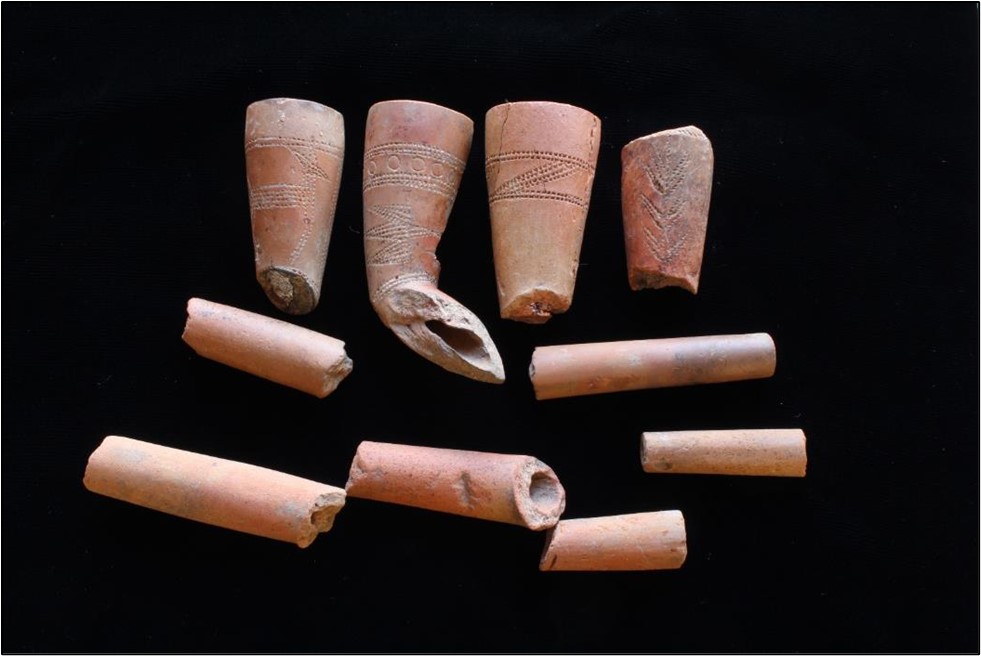Reconsidering the Colonial Era at Virginia’s Eastern Shore: The Archaeology of Eyreville
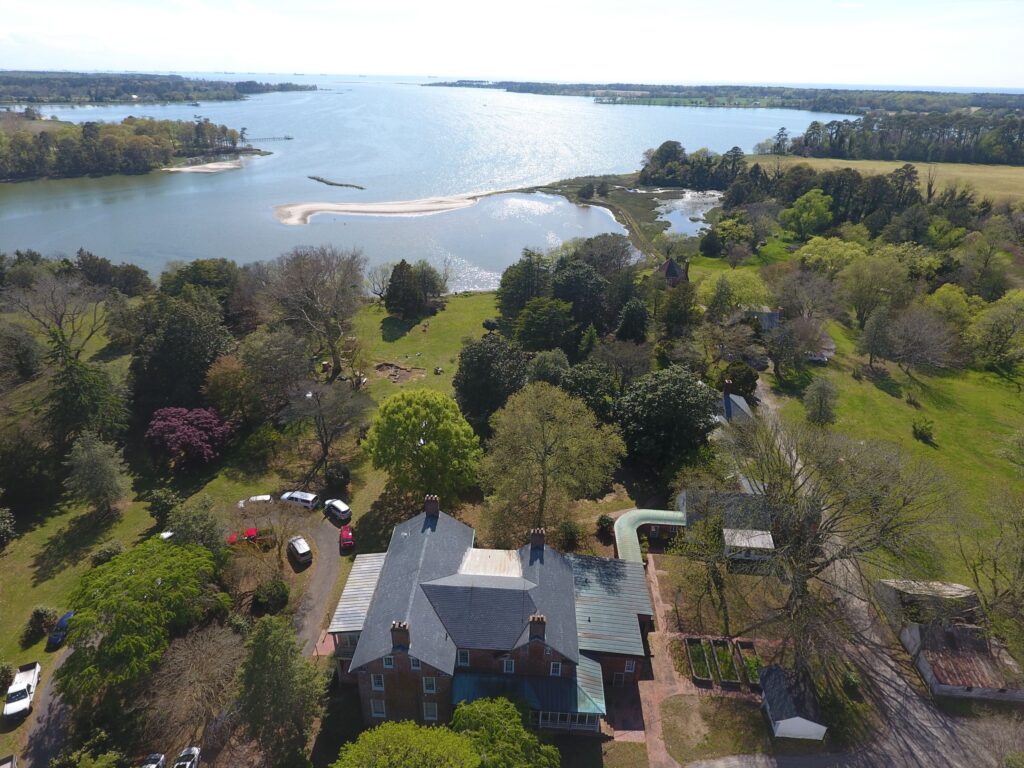
Recent archaeological investigations at this massive 17th-century estate may change our understanding of the lives of English settlers during the earliest years of Virginia’s colonial period.
By Debra McClane, Architectural Historian, and Michael Clem, DHR Archaeologist
A sprawling historic property in Northampton County on Virginia’s Eastern Shore has prompted reconsideration of early English colonial settlement in the area. Eyreville, which has been under continuous cultivation since the 17th century, is located along the shores of Cherrystone Inlet with immediate access to the Chesapeake Bay.
John Howe, who was living on the Eastern Shore as early as 1623, received the first patent for the acreage that included present-day Eyreville. Historic records demonstrate that he lived at the property until his death in 1637. Implicit in that occupation of the land is that he must have constructed a house during the 1630s. The second owner, Edward Robins, held the land for only a few years until his death in 1640. Robins’s brother, Obedience, oversaw the property until 1657, when William Kendall purchased 600 acres from Edward Robins’s daughters. Although Kendall arrived in the Virginia colony as an indentured servant, he eventually served several terms as a county commissioner on the local courts, as a multiple-term burgess at Jamestown, and was speaker of that body a year before his death (1686). Kendall obtained the rank of Colonel in the local colonial militia and was a successful businessman and trader. He owned a tannery on the creek to the south of the property where he resided and by 1664, he owned a share in a ship. Additionally, Kendall enslaved several Africans, William, Charles, and Mingo. Documentary evidence even suggests that a ship may have been constructed at the Eyreville property as well. The property stayed in the Kendall family until 1797 when it was sold to the Eyre family. This succession of ownership within only a few families with distinct and deep ties to the Eastern Shore, and Eyreville’s retention into the 20th century as a large-acreage property, contributed significantly to the preservation of the archaeological and architectural resources on the property.
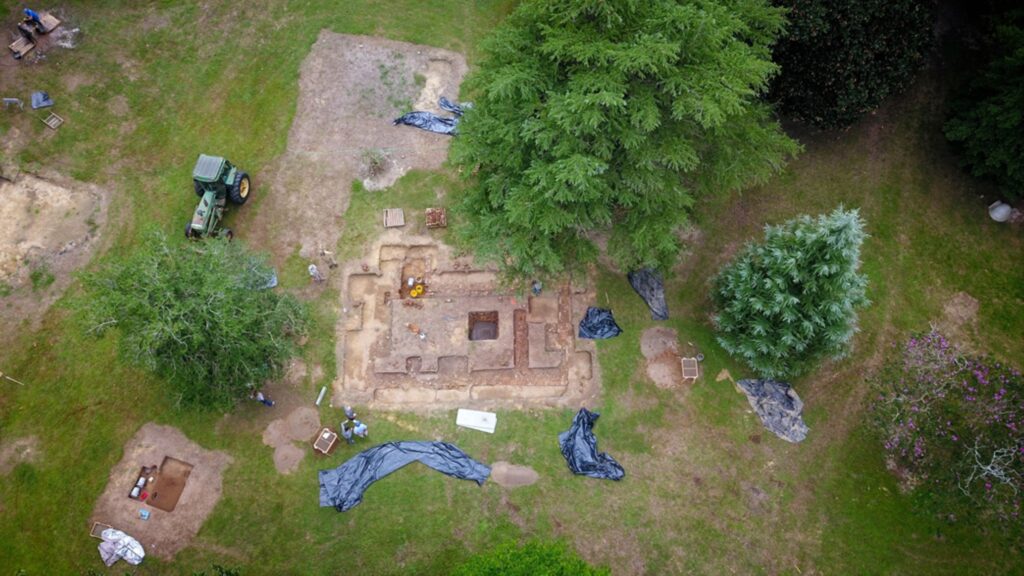
In 2016, Eyreville’s present owner notified DHR archaeological staff of artifacts observed during the removal of a tree in the yard surrounding the main house. Onsite observations noted numerous yellow (Dutch) bricks, pipe stems, coins, and ceramics. Subsequent subsurface excavations, all supervised by DHR archaeologists, revealed the remains of three domestic dwelling sites, a possible storage pit or cellar, and a well that dates from ca. 1637 to ca. 1687. The site retains excellent integrity with intact stratified cultural levels that have not been disturbed for four centuries. Documentary research undertaken in support of the archaeological investigations has provided further information about not just Eyreville’s history, but that of the Delaware/Maryland/Virginia (Delmarva) Peninsula.
The archaeological features discovered to date at Eyreville comprise one of the earliest colonial-era sites yet to be excavated on Virginia’s Eastern Shore. The site also is one of the earliest sites identified to date on the Delmarva Peninsula.
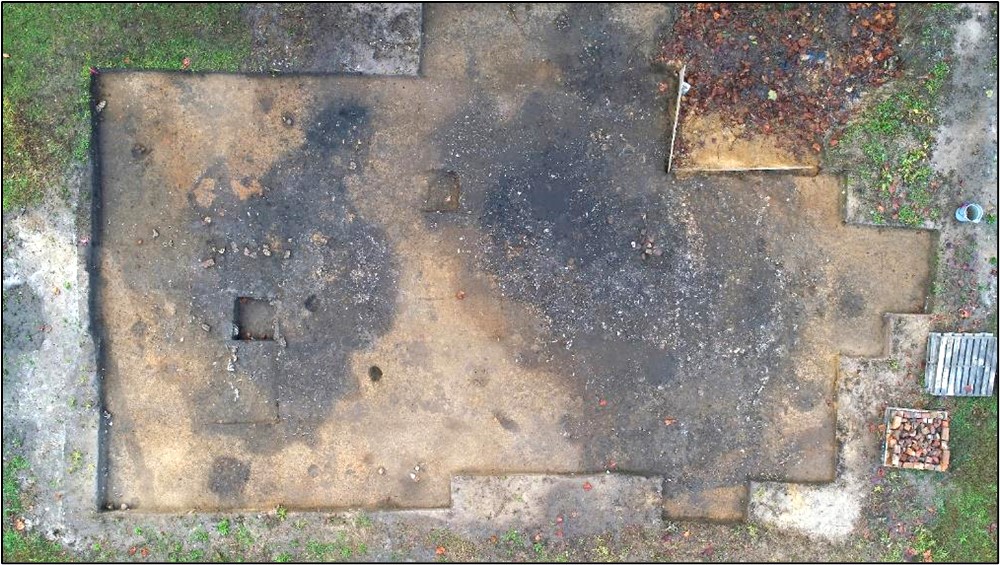
The ca. 1630 house site, shown in Figure 3, measures 50’ (east-to-west) by 30’ (north-to-south). The hole from which the tree stump was pulled is at the top right. The dark areas show the debris that was used to backfill an old cellar of the original house. Material collected at this site dates to the early and mid-17th century, and suggests that it was abandoned about the time William Kendall purchased the property in 1657 and built a new brick house nearby. Some post holes are visible in the aerial view above and are subject to further investigation. As described in The Chesapeake House: Architectural Investigation by Colonial Williamsburg, Cary Carson and Carl R. Lounsbury, eds. (Chapel Hill, NC: The University of North Carolina Press, 2013), the ca.-1630 house’s footprint appears to correspond to a “Virginia House,” a regional form that emerged in the Chesapeake region by the second quarter of the 17th century and reflected simplified construction techniques built to serve immediate housing needs.
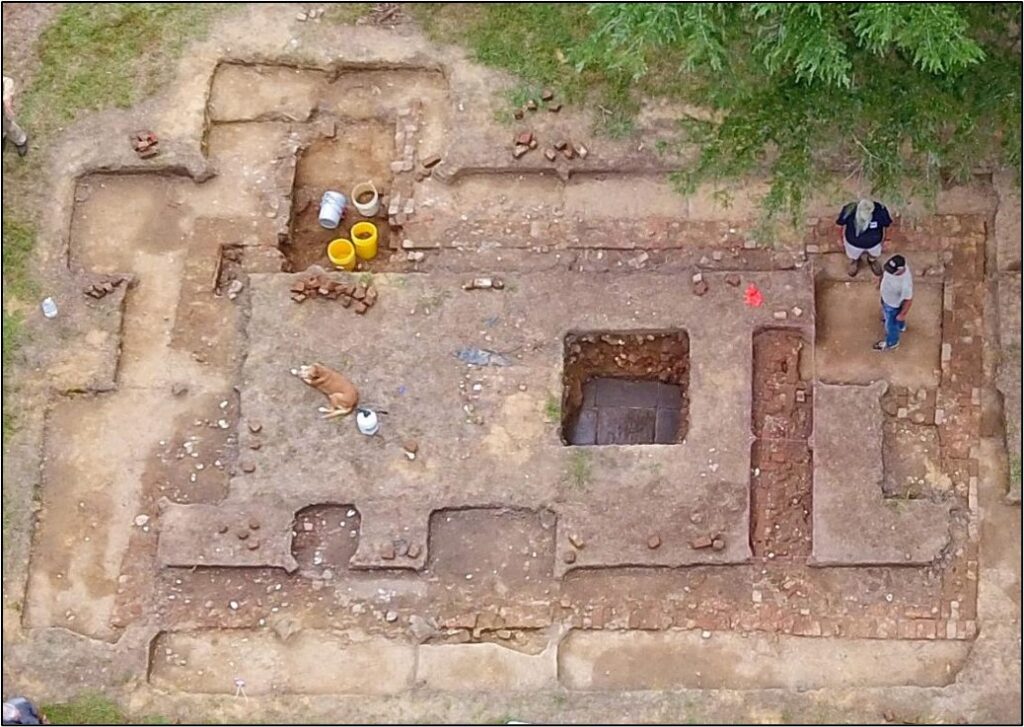
A second house site of sturdier brick construction also was identified at Eyreville during archaeological investigations. The site, which measures about 16 feet deep by 32 feet wide, has a bulkhead entrance to the cellar in the southwest corner (top left of Figure 4), and a nicely finished stone-tiled floor in what was likely a basement. The house’s construction material includes red bricks, but yellow Dutch-made bricks line the entire bottom of the foundation. Archaeologists believe that William Kendall (1657) built this house to replace the original Howe house (pictured in Figure 3). Kendall’s dwelling site is about 100 feet north of the Howe house site.
The presence of yellow brick at the Kendall house site is notable because it indicates that trade relationships among English settlers and Dutch merchant ships was taking place on the Eastern Shore at a time that relations between the English and Dutch imperial powers were fraught. Merchant ships bearing manufactured goods, however, were welcome by English settlers without regard to their national origin. Even the yellow bricks, which often were used as ballast for Dutch ships, found an important use, serving as foundation material for the first permanent dwelling built at Eyreville.
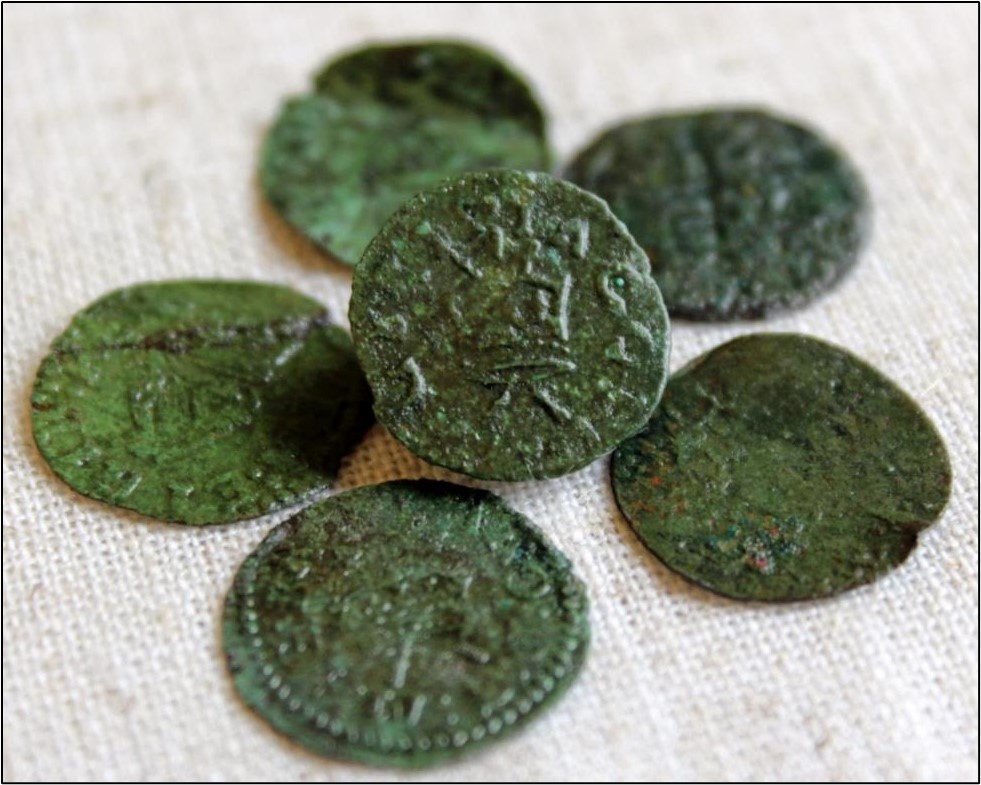
Even more instructive about 17th-century activities at Eyreville is the wealth of artifacts that have been recovered, from Native American pipes to English coins, trade beads, and Dutch-made bricks. Hundreds of English-, Dutch-, and Native American-made pipe fragments speak to the significance of tobacco among all three populations. Tobacco served as the Virginia colony’s principal cash crop as soon as English colonists learned how to cultivate the plant from Native Americans.
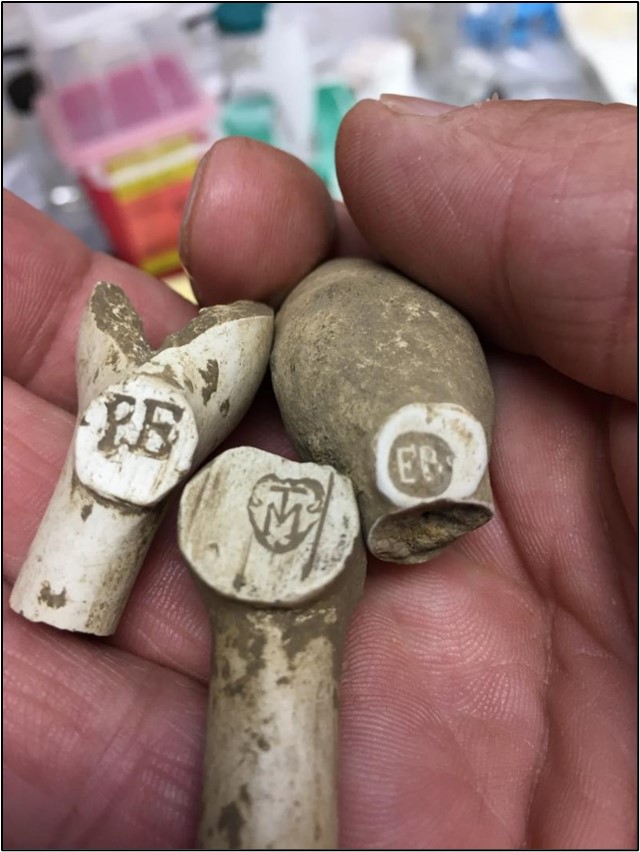
The archaeological investigations completed to date at Eyreville represents a core area and, as more work is completed in the future, the important information to be learned from the site could continue to rewrite our understanding of lifeways on Virginia’s Eastern Shore during the earliest decades of the Virginia colony.
